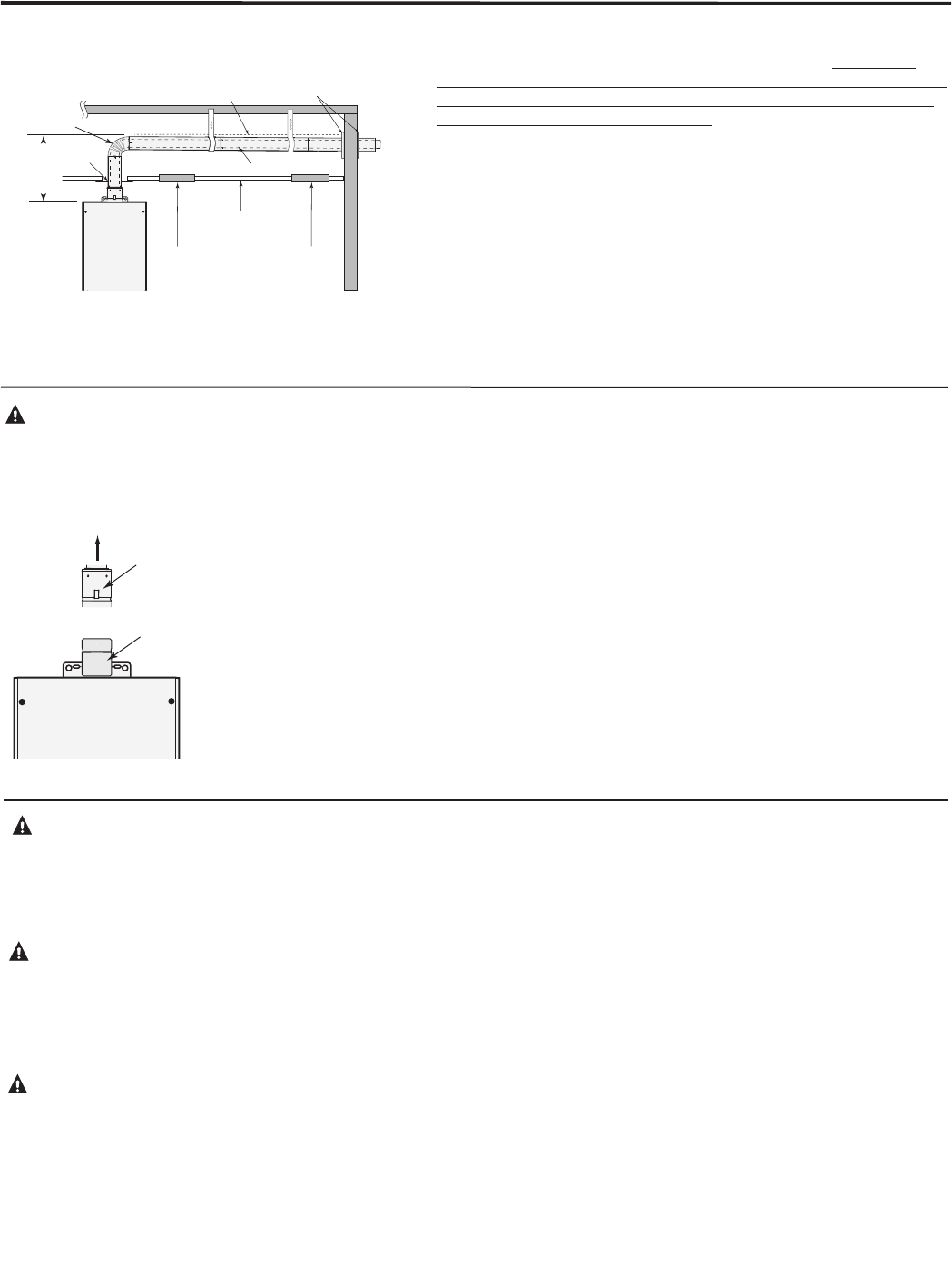
Installing the water heater:
Venting Through Closed Spaces
If the coaxial vent piping passes through a closed space, a minimum
clearance of 1” (2.5 cm) when installed horizontally or 6”
(15 cm)
when
installed vertically should be maintained between the coaxial vent pipe
and combustibles and noncombustibles. Be sure to follow local codes
and vent manufacturer’s installation instructions.
For maintenance and inspection purposes, the following access panels
are required.
● Two (2) inspection access panels large enough to allow access for
venting inspection. One (1) of these access panels should be close
to where the coaxial vent pipe enters the ceiling. The other access
panel should be near the vent termination.
● A ventilation access panel with a 16 in
2
(103 cm
2
) opening should
be provided every 10 ft (3 m).
downward slope
7/8" per foot
Ceiling
Vent Pipe
Wall Plates
Board
Inspection
Fire
Stop
Access Panel #1
Inspection
Access
Panel #2
2’
(61 cm)
Max.
94° Elbow
Appliance Vent Adapter
The water heater must be installed
with a UL 1738 approved Category III
Stainless Steel appliance coaxial vent
adapter.
Read the following instructions before
installation.
● Test fit the adapter over the water heater
collar before proceeding.
● Slide adapter end “A” down over heater
collar “B” as far as it will go.
● Use the screws provided with the vent
adapter to attach the adaptor to the heater
collar.
NOTICE: Follow the appliance coaxial vent
adapter manufacturer’s instructions.
Appliance
Vent Adapter
Water Heater
Exhaust
Flow
B
Collar
A
Draining the Condensate
Provision should be made to collect and
dispose of condensate from venting systems.
When a water heater is vented horizontally,
the vent pipe can have a DOWNWARD or
UPWARD slope towards the termination. If
an UPWARD slope is used, a condensate trap
must be installed as close as practical to the
water heater in order to prevent condensate
from draining back into the water heater.
See Examples A and B on page 13 and 14
for DOWNWARD and UPWARD slope for
horizontally vented water heaters.
When a water heater is vented vertically,
an UPWARD slope must always be used.
A condensate trap must be installed in the
horizontal section of the vent and as close
as practical to the water heater in order to
prevent condensate from draining back into
the water heater. See the diagram on page 14
showing UPWARD slope for vertically
vented water heaters.
Always attach a drain hose to the drain fitting
and plumb the hose to a sanitary sewer drain.
A high temperature silicone tubing suitable for
use with acidic condensate and appropriate for
the temperature range should be used.
The drain tube is fashioned into a “pigtail” trap
and must be filled with water to prevent flue
gases from emitting into the building prior to
operating the appliance.
CAUTION: Condensate
must drain away from the
water heater and should
not be allowed to drain
back into any part of the
vent system.
WARNING: Failure to
provide a vent condensate
drain close to the appliance
could allow acidic flue gas
condensate to enter into
appliance flueways, causing
premature failure of the
appliance.
CAUTION: Condensate
is known to be acidic; refer
to local, state (provincial)
or federal codes for proper
handling and discharge
methods.
10
CAUTION: Ensure that
the appliance vent adapter is
securely attached to the water
heater collar.


















